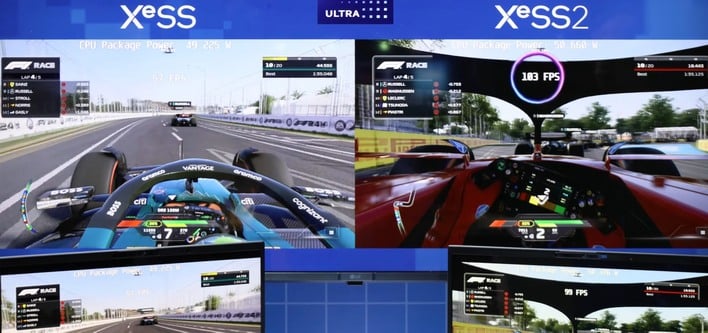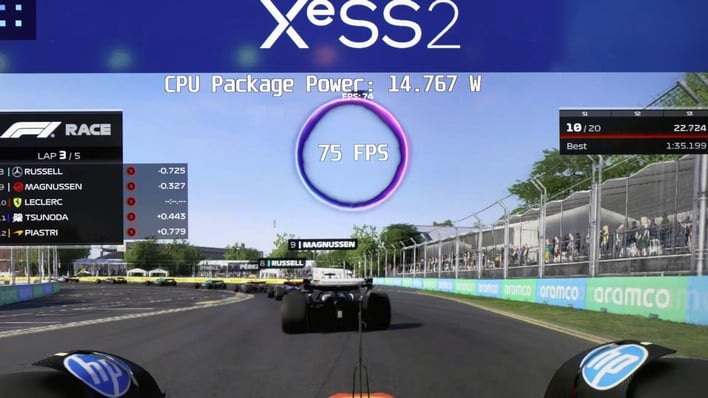Intel Demos XeSS 2 With Frame Gen On Arrow Lake H And It's A Game-Changer
With the launch of its Battlemage GPUs, Intel also debuted its second-generation XeSS technology. In case you haven't put it together, XeSS 2 also includes frame generation (FG) functionality. Unlike XeSS upscaling, though, it's not available to all graphics products. In fact, it's not even available to all Intel graphics products. XeSS FG specifically requires an Arc graphics product that includes Intel's matrix math accelerators, known as "XMX cores".
At CES 2025, we got the chance to check out a demo of XeSS FG in F1 24 running with "High" settings on a 16" MSI Prestige laptop. That laptop, just like the MSI Prestige 16 AI EVO that we reviewed before, does not include discrete graphics. However, it does have a brand-new Arrow Lake-based Core Ultra 9 285H CPU, and the new chips feature "Xe-LPG+" graphics that freshly include Intel's XMX cores.
The graphics engine in the Core Ultra 200H processors is fundamentally pretty similar to that in the Core Ultra 100H processors, codenamed "Meteor Lake". It has the same number of Xe cores, and it finds its origins in the same "Alchemist" architecture as before. However, the XMX-core upgrade in Xe-LPG+ means that the new parts are much better at AI workloads, including XeSS.
In fact, while the emphasis in the video is on XeSS FG, the XMX cores in the new Arrow Lake-H parts will also enable them to use the more complex Intel-exclusive path for XeSS upscaling, too. That means that they'll offer both improved performance and radically improved visual clarity roughly on par with NVIDIA's DLSS (and perhaps, AMD's upcoming FSR4, too.)
Not only is the new part able to offer a significant performance uplift to over 100 FPS in F1 24 thanks to XeSS FG, but the fellow running the demo, Intel's Mike Bartz, also demonstrated another potential benefit of XeSS FG. Putting the Arrow Lake system into a low-power "whisper" mode limited the SoC to just 15W, and yet the machine was able to maintain approximately 60 FPS in F1 24 thanks to XeSS FG.
That's particularly impressive considering that the Meteor Lake part was requiring over three times as much power to produce the same visual experience. Now, we have to admit that 30 FPS frame-gen'd to 60 FPS is not the most pleasant experience, and probably not something we would want to do in a racing game like F1. However, for a title like Civilization VI or Marvel's Midnight Suns, this might be a great solution.
Discussions on the modern Internet often lack nuance, and frame generation as a technology has both real merit and real limitations. In our tests of XeSS FG on the Arc B580, we found it to work rather well aside from some early implementation weirdness, mostly in the menu. It's a great way to take a game that you can only manage 50 or 60 FPS in all the way up to 100+ frames per second for improved visual fluidity, and it's a real benefit of Intel's new Core Ultra CPUs.
By the way, we have a whole pile of short CES 2025 videos on our YouTube channel; why not check them out and subscribe while you're there, on your coffee break?



